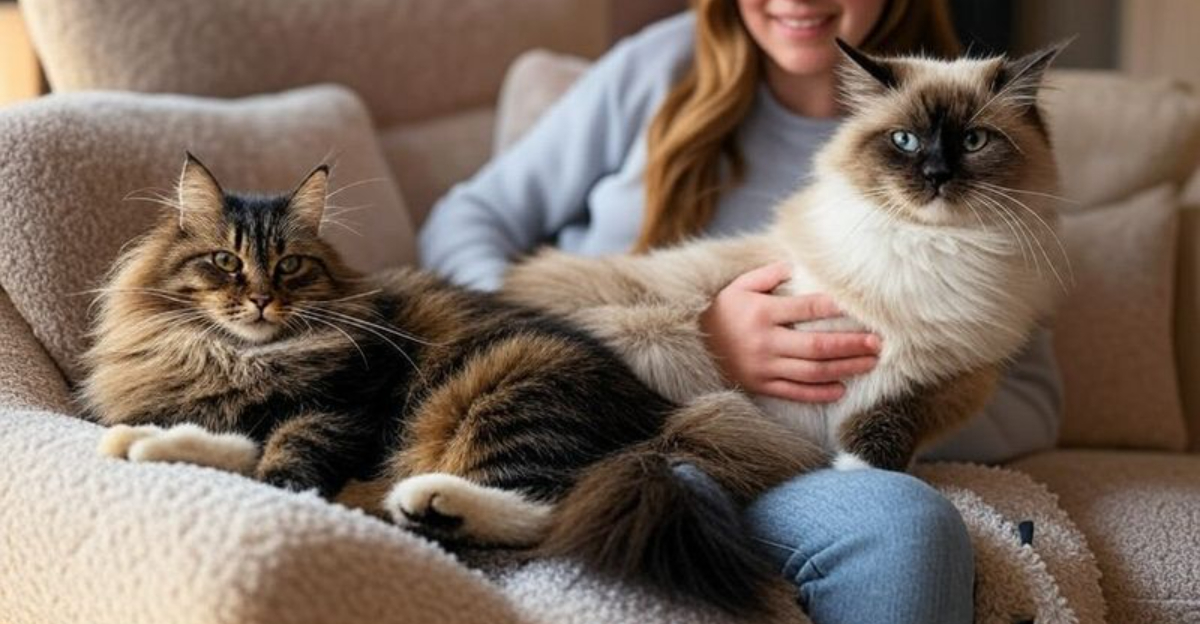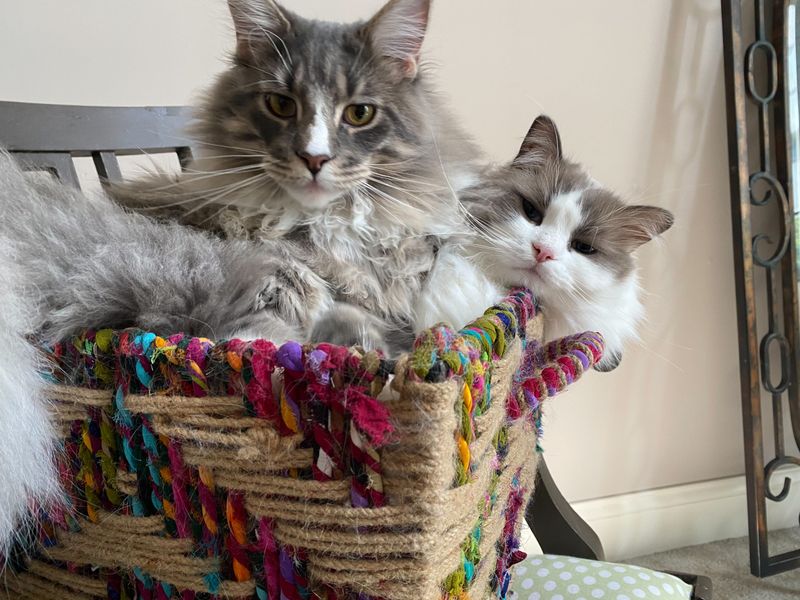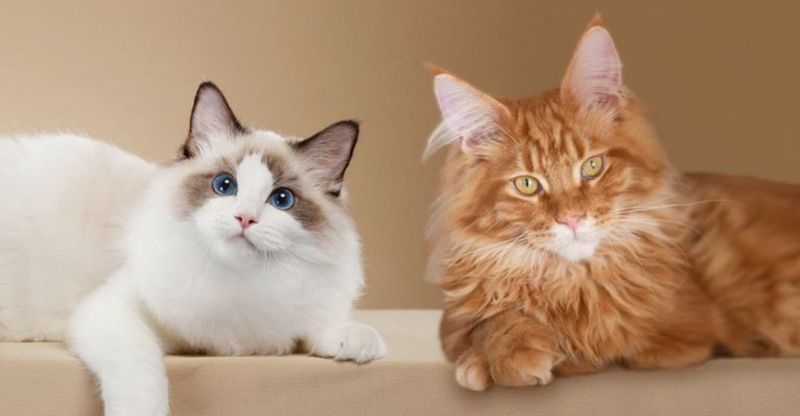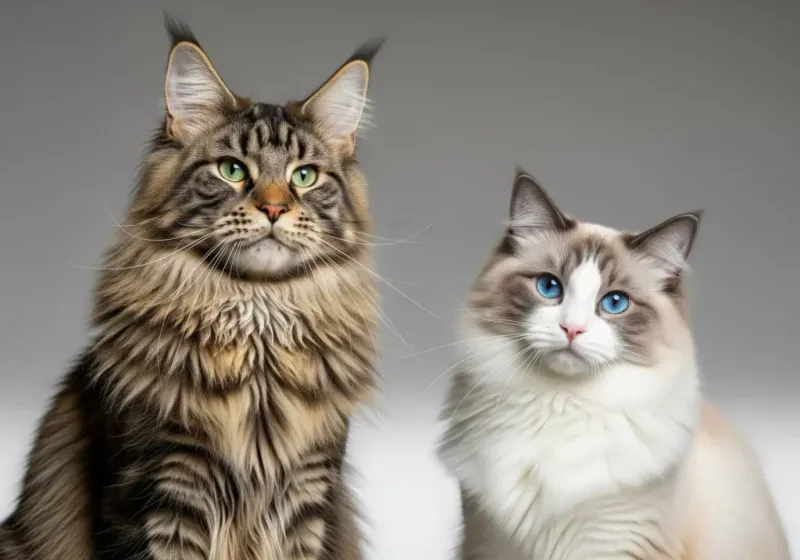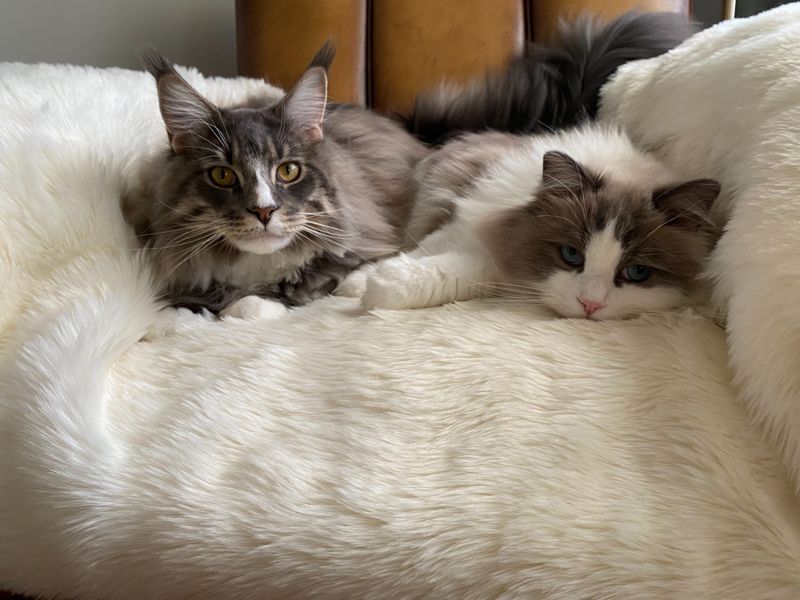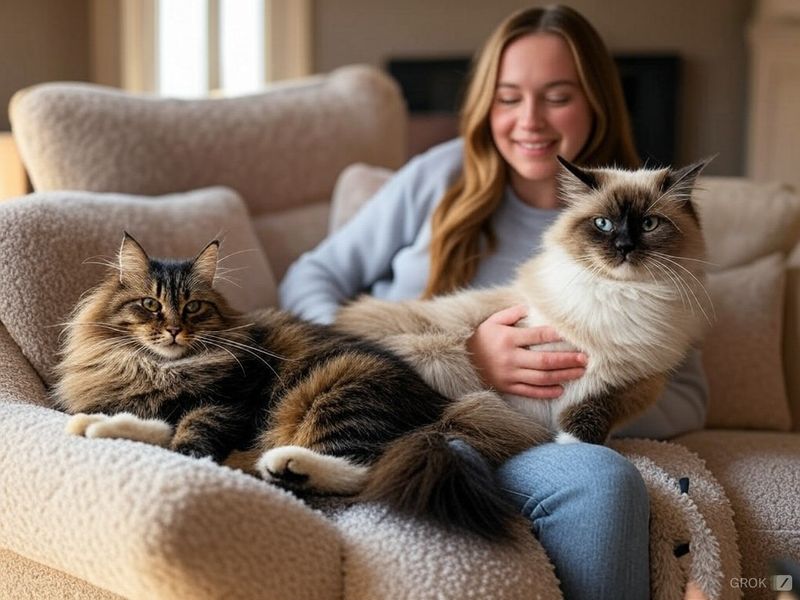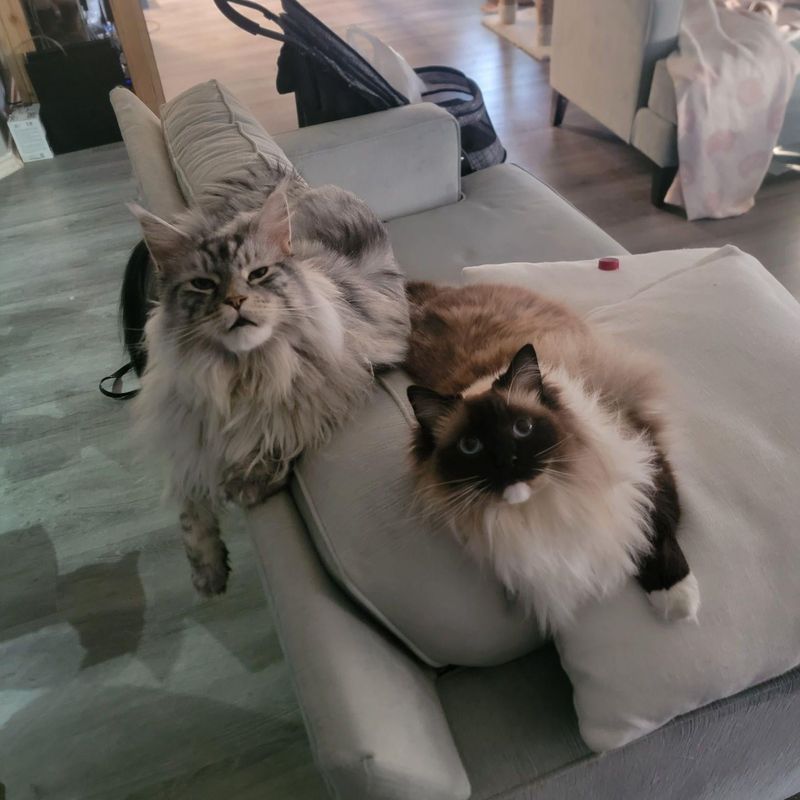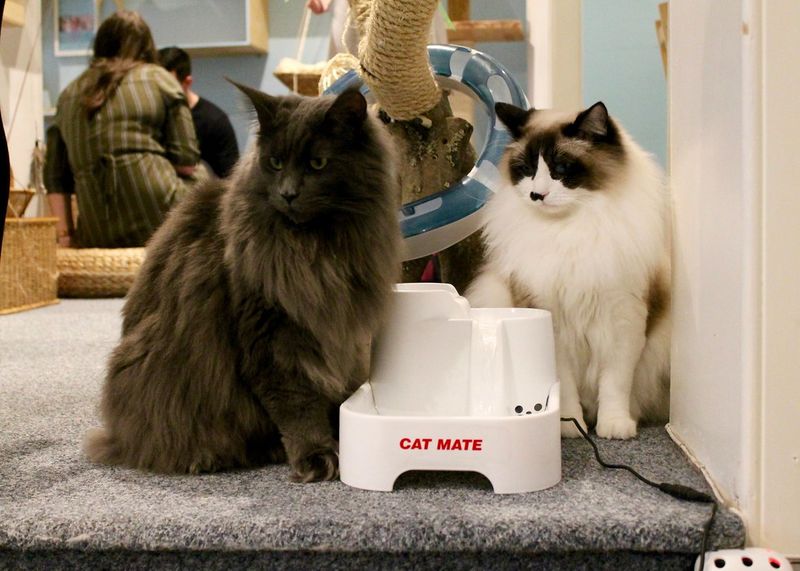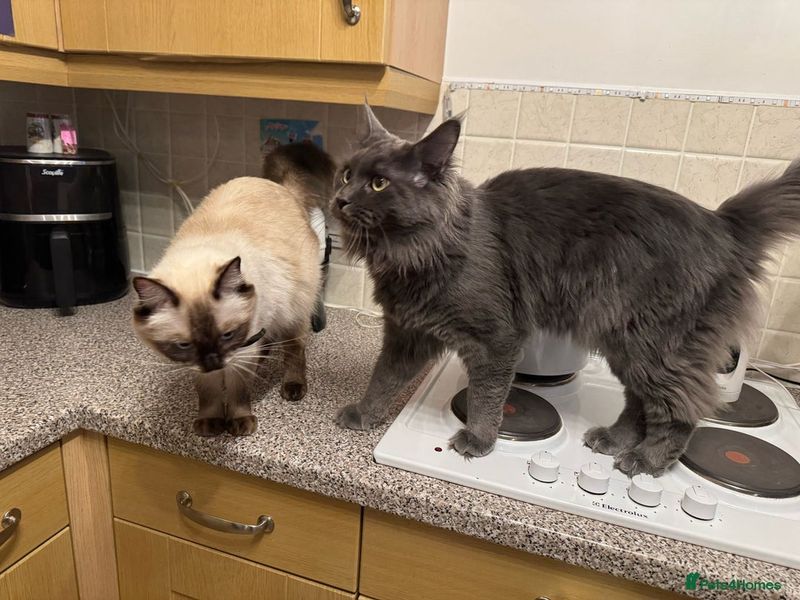📖 Table of Content:
Ragdolls and Maine Coons rank among the most popular large cat breeds in the world. Both make wonderful companions, but they have distinct characteristics that set them apart. Understanding these differences can help potential cat owners choose the perfect feline friend that matches their lifestyle and preferences.
1. Size and Weight Disparities
Maine Coons take the crown as the larger breed, with males weighing up to 18 pounds or more. These gentle giants can measure up to 40 inches in length from nose to tail tip, earning them the nickname “the dogs of the cat world.”
Ragdolls aren’t small either! They typically weigh between 10-15 pounds, with males being larger than females. Their bodies develop fully at around four years of age, compared to the Maine Coon’s slower growth that can continue until age five.
The difference becomes apparent when these cats stretch out—a Maine Coon can take up half your sofa, while a Ragdoll might only claim a cushion or two.
2. Coat Texture and Maintenance
Running your fingers through a Maine Coon’s coat reveals a water-resistant, shaggy double layer with a silky undercoat. Their fur varies in length throughout their body, with longer guard hairs around the neck forming their distinctive ruff and impressive, bushy tail.
Ragdolls sport medium-long silky fur that feels almost rabbit-like to the touch. Unlike Maine Coons, their coat lacks a thick undercoat, resulting in less shedding and fewer mats.
Grooming requirements differ, too. Maine Coons need brushing several times weekly to prevent tangles, while Ragdolls can often manage with just once or twice weekly brushing sessions.
3. Facial Features and Expression
With a broad muzzle, pronounced cheekbones, and slightly slanted, expressive eyes, the Maine Coon’s face commands attention. Their signature ear tufts and pointed tips give them a striking, almost mythical appearance.
Ragdolls present a completely different look with their sweet, rounded faces and large, vivid blue eyes that seem to stare right into your soul. Their ears are moderately sized and set wider apart.
These facial differences create unique expressions—Maine Coons often appear alert and wise, while Ragdolls have that perpetually surprised or innocent look that many owners find irresistible.
4. Personality and Temperament Contrasts
Independent yet affectionate, Maine Coons are playful companions for life. They retain a kitten-like curiosity and thrive on mentally stimulating activities, making puzzle toys and interactive playtime a favorite.
Ragdolls earned their name from their tendency to go limp when held—a trait that showcases their extraordinarily relaxed temperament. They prefer being wherever you are, often following owners from room to room like furry shadows.
Activity levels separate these breeds, too. Maine Coons generally maintain higher energy levels with bursts of playfulness, while Ragdolls typically prefer lounging beside you rather than engaging in acrobatic play sessions.
5. Vocalization and Communication Styles
Maine Coons speak their own language with distinctive chirps, trills, and small meows that seem almost bird-like. These social communicators use their unique voices to express everything from hunger to simple greetings when you enter a room.
Ragdolls tend toward the quieter side of the feline spectrum. When they do vocalize, their soft, melodious meows come across as gentle requests rather than demands.
Both breeds communicate through body language, too. Maine Coons express themselves through elaborate tail positions and ear movements, while Ragdolls often communicate through sustained eye contact and subtle head-butts to show affection.
6. Color Patterns and Eye Variations
From deep black to tabby stripes and intricate tortie patterns, Maine Coons wear a variety of coats with flair. Their eye colors—most commonly copper, green, or gold—can occasionally differ in each eye, especially in whites.
Ragdolls follow specific color point patterns similar to Siamese cats. Their bodies remain lighter while their faces, ears, paws, and tails display darker coloration in seal, blue, chocolate, lilac, flame, or cream points.
The most striking difference? Purebred Ragdolls always have blue eyes—ranging from pale ice-blue to deep sapphire—while Maine Coons rarely display this eye color unless they carry white spotting genes.
7. Historical Origins and Development
Originating in New England, Maine Coons are thought to be the result of seafaring longhaired cats mating with local short-haired cats. Their luxurious, water-repellent fur and snow-ready paws reflect their cold-weather heritage.
Ragdolls have a more recent and deliberate origin story. In the 1960s, California breeder Ann Baker developed the breed from a white Persian-type cat named Josephine, selectively breeding for temperament and distinctive colorpoint patterns.
These different backgrounds explain much about each breed’s physical characteristics—Maine Coons developed rugged features for survival, while Ragdolls were specifically bred for their docile personalities and striking appearance.
8. Health Considerations and Lifespan
These cats tend to live 12–15 years and stay robust, but hypertrophic cardiomyopathy and hip dysplasia are concerns due to their size and genetics.
Ragdolls typically live slightly longer, with many reaching 15-20 years. Their breed-specific concerns include polycystic kidney disease and hypertrophic cardiomyopathy, though reputable breeders test for these conditions.
Weight management presents different challenges, too. Maine Coons’ natural athletic build requires regular exercise to prevent obesity, while the more sedentary Ragdolls need careful portion control and encouraged playtime to maintain healthy weight.
